The Real Market with Chris Rising – Ep. 87 Zach Sokoloff
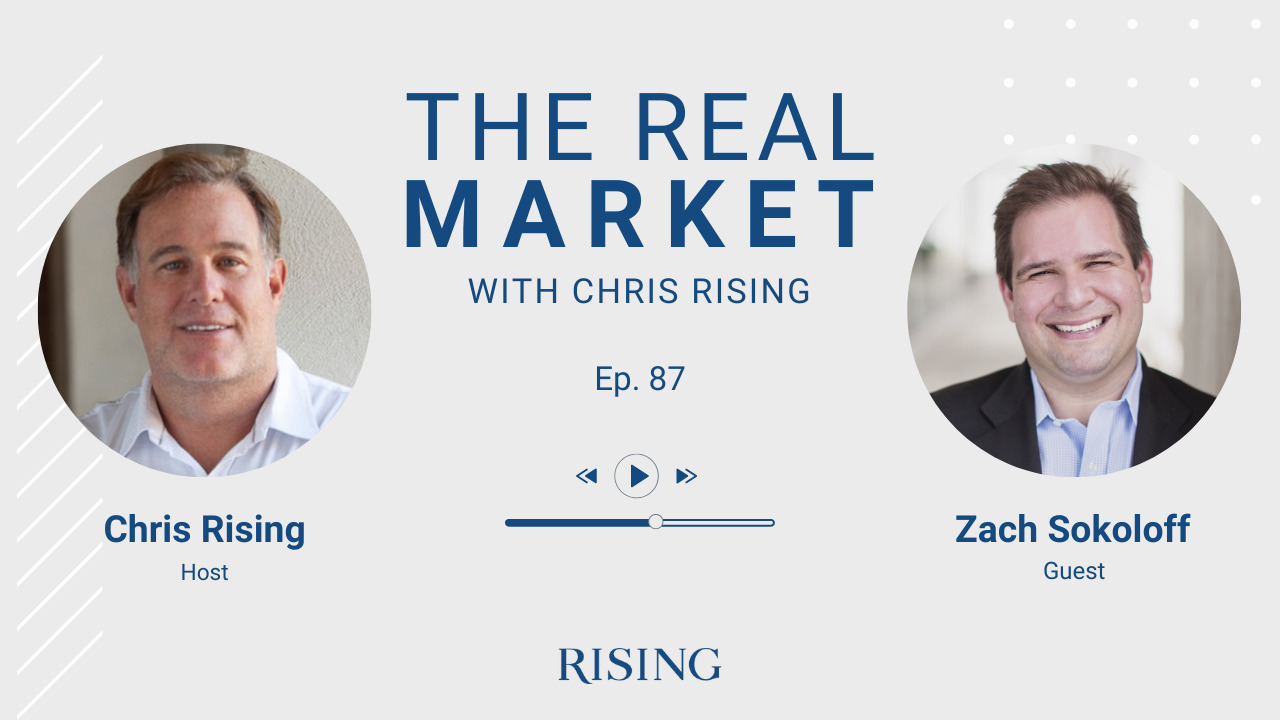
The Real Market with Chris Rising – Ep. 87 Zach Sokoloff
Podcast: Play in new window | Download
Chris Rising (00:00:02):
Welcome to The Real Market, with Chris Rising, the only podcast that brings the real estate conference panel to your headphones. You’ll hear from superstars from every realm of commercial real estate, the biggest brokers, the most well-known architects, the largest investors, and the most visionary developers. We’ll learn what they do, how they do it, and what drives their success. We’ll discuss the latest trends across regional markets, capital flows, both national and global, and we’ll explore technology’s role in shaping all of them. We’ll take a clear-eyed look at where we’ve been, where we are now, and what’s to come. Real conversations, real experts, real insights. This is The Real Market.
(00:00:50):
Welcome to The Real Market, with Chris Rising. I’m really excited to have Zach Sokoloff here with me today. He’s with Hackman Capital, Senior Vice President, Asset Management. But I’ll tell you, one of the things that I’m really excited about having him on is they’ve got some exciting development projects happening. And I know in the world that we live in today, where it looks awfully bleak, it sure is nice to hear that people are putting shovels in the ground. So Zach, welcome to The Real Market. I really appreciate you being here.
Zach Sokoloff (00:01:17):
Hey, Chris, thanks so much for having me. Really excited to be on board.
Chris Rising (00:01:21):
Well, I haven’t, in a while, had a local developer on and talking about stuff here in Los Angeles. But what I think will have a national reach to it all is part of the thing that you are developing, and it’s not the whole project but it’s an important part of it, are sound stages and things that people who don’t live in Los Angeles think are really cool and creative. I think we drive by a little bit often and say, “What’s that box?” But tell us a little bit about what you’re doing with Hackman and then maybe as you do that, tell us a little bit about the company.
Zach Sokoloff (00:01:53):
Sure, sure. Appreciate you asking the question, Chris. And I’m a born and bred Angelino, a local boy. And so to be able to come back home and work adjacent to the industry that defines so much of who we are as a city is just an amazing honor and privilege and one that we take super seriously. And so at Hackman Capital, we are the world’s largest independent owner and operator of sound stages. We own 19 studio facilities across the world, several of which are here in Los Angeles. And part of our business is partnering with an affiliate organization called the MBS Group, which is the largest lighting, grip, leasing equipment company across the globe. And these are folks who have cut their teeth in the entertainment industry, they’re grizzled veterans and know this business inside and out. And something I’m sure we’ll talk about as we get into the conversation, Chris, is how studios represent the intersection between real estate and operations.
(00:02:59):
Clearly, some of the sites that we are fortunate enough to own, like the [inaudible 00:03:05] managed Television City site in the Beverly Fairfax district and Radford Studio Center and Studio City are just generational pieces of real estate, 25 acres at Television City, 55 acres at Radford. These are sites that literally go decades between trades.
(00:03:24):
And so to step into the shoes of managing these sites and reimagining them for the future, from a real estate standpoint, is just an unbelievable opportunity. But what really separates, I think, studio assets from other real estate asset classes is the operational nature of the business, the fact that we are engaging daily with production customers, trying to understand how to service them most effectively, to cater to their needs on the lot so that they can come in and produce the unbelievable content that we all love to consume. And so it’s an amazing business. It’s one that’s certainly grown in the last few years, gotten a lot more attention from institutional players. But in Los Angeles in particular, represents some of the crown jewels of our city’s real estate and landscape. And so we’re cooking up some exciting stuff, that’s for sure.
Chris Rising (00:04:21):
Well, we are definitely going to go into it. But just so the audience, I have two touchpoints to the studio business, one of which in 2001 I was working for John Kushman and we got a call from Roy Disney’s Shamrock from Stanley Black’s Group and said, “We built something on Manhattan Beach and we don’t know how we can sell it.” And it was the Shamrock Studios. And I remember staying up late putting together the package, but there wasn’t a deep buyer pool in 2001. I think if that came to market today, it would fly off the shelf. So that’s one thing where I was like, “Wow.” So you go in there and they really are, they’re big hangers that are sound stages. And people forget when they’re filming a TV sitcom and it’s Friends, and it looks like the coffee shop, when you pull back out of it’s just rigs and lights and it doesn’t look like a coffee shop other than just for the set.
(00:05:15):
But the other is when I was at McGuire, we did [inaudible 00:05:17], so I got my feet wet on the production space. And so the audience understands, this whole business in production is really the gig economy explained. These people, they get a movie, they get a television show, they’re going to work somewhere maybe three months if it doesn’t get picked up. And if they’re lucky, maybe it’s five years, but it’s in breaks because they have breaks. So this is not IBM signing a lease for 20 years and no one’s leaving, they’re coming in every day. How do you guys look at that, the fact that it’s a very unique architectural asset and it’s basically a series of nine month contracts that get renewed or not renewed? That’s a different business than most people think of for real estate.
Zach Sokoloff (00:06:05):
Yeah, yeah. There’s a lot in that, Chris. And I think you’re spot on in several ways. I think it’s funny, just as a point of cultural note, I’m talking to you from Radford Studio Center in Studio City, and one of the more famous shows that has called Radford Home is Seinfeld. And maybe about 100 yards away from me right now is what we call our New York Street, which is a back lot outdoor filming location that was built in the ’90s specifically for Seinfeld. And you walk down the street and it looks like you’re in the West Village in New York City and you’ve got coffee shops and bodegas and the balcony where Jerry threw the marbled rye in the storefront where the The Soup Nazi was filmed. And so it really does have this quintessentially LA kind of movie magic feel to the lot.
(00:06:57):
And that’s so much of the value that we see in these assets is they’re just contiguous parcels of land that are so rare, especially in info locations, whether it’s Manhattan Beach like you were discussing, Chris. We have a 22 acre 15 stage facility at the MBS Media campus in Manhattan Beach, which is just a phenomenally technology rich studio. And that’s something that I’m sure we’ll get into later in the podcast, just how the entertainment industry has changed, how sound stages must evolve to meet the demands of the entertainment customers that they service. But you talk about the space itself, which is this very bespoke and kind of unknown space to many people. And it’s interesting, I think what we see is a whole spectrum of users and we’re the beneficiaries of the boom in LA. We’re kind of Silicon Valley from northern California, migrated south for the great weather that we have and started dipping their toes in the entertainment waters.
(00:08:02):
And you have the emergence of Silicon Beach and Michael Hackman, the CEO of Hackman Capital Partners, I think was really at the cutting edge of seeing that trend. His career spans an arc of nearly 40 years, and he got his start in equipment liquidation and warehouse and industrial facilities. And very quickly realized, over a few decades of work, that these kind of industrial spaces were becoming in more demand for creative office users. And he was a very early adopter of the creative office conversion concept and really pioneered that, particularly in Culver City, which is one of the submarkets in which we do quite a bit of business. And I think when we started seeing a little bit more excitement and activity around the studio space, and that really commenced in 2014, that’s when we bought our first studio, the Culver Studios, which was then a nearly 100 year old facility that today is the home of Amazon Studios.
(00:09:09):
I think he looked at the sound stages and he said, “Well, gosh, that kind of looks like an industrial building. I think I know what to do with that.” And we have 14 acres in the heart of Culver City. At the time, the city was just turning the corner and you could see booming investment in that submarket. And so from a real estate fundamental standpoint, it made a lot of sense. It kind of fit the model of investing that Michael had done throughout his career. That was the first foray into the entertainment space. And here we are now 19 studios deep and over 105 sound stages across the world within our portfolio, and many more in the development pipeline as you highlighted at the top of the show. But what I think is particularly interesting is this dynamic around sound stages that you have a variety of different lease structures that exist within the space.
(00:10:03):
You do have your short term seasonal production license agreements that can last anywhere from six to nine to 12 months. We have customers on site here at Radford or Television City, the other studio that I manage, who have been at the lot for decades. And so even though they sign seasonal license agreements, they functionally perform like a long-term tenant. We have examples in our portfolio of long-term deals. Amazon at Culver Studios, I mentioned they signed a 15 year lease at the facility.
(00:10:36):
And so those kinds of kind of pathbreaking deals I think have really opened people’s eyes to the dynamism of the entertainment industry asset class within the real estate world where even on the short term basis, if you are able to collect the right group of customers and productions who have staying power and who you think will be around for not just one season, but for many seasons, the assets really begin to perform like long-term leases. And obviously, being in LA, we live and breathe this industry, the number of people who had employs. I think one in five Angelinos are connected to entertainment in one way or another. And so to create these job meccas on these studio lots, from our standpoint, is just an amazing opportunity to invest in the local economy, to invest in the regional economy and ensure that the city can remain the creative capital that it has been for so long.
Chris Rising (00:11:42):
Well, let’s unpeel that onion a little bit about what you were saying because what you just described is what I hear from every tech office tenant that they want. “Can I just sign a nine month deal and I’ll just keep renewing it and renewing it? And do you have the extra space?” But the big question is how do you finance a studio project? Say it’s got 14 or 15 sound stages, how do you get something like that financed? Are you guys just by its nature force to use more equity until you get something launched and off the ground? What’s the capital stack look like for one of your projects?
Zach Sokoloff (00:12:21):
Yeah. It’s a great question, it’s a sophisticated question, Chris. And I think what we’ve seen is the capital markets are catching up to the industry. They are now seeing the finance ability of the cash flows of a studio asset. And I think part of that is from our standpoint, as I mentioned at the top, we’re fortunate enough to work with an affiliate company called the MBS Group, which are the premier studio operators in the world. These are folks who know how to manage these facilities to the most efficient standard and high quality service that today’s customers demand.
(00:13:02):
And so when we step into acquisition process or when we are seeking financing, we bring to the table this two-headed beast as it were, of sophisticated long-term real estate thinkers with this operator partner who knows how to drive value out of these studios, who understands from the user’s perspective what studios need to offer in order to attract world-class production companies.
(00:13:35):
And so I think from our standpoint, we feel very fortunate to be in a position where we are developers by name, but I think we really see ourself in the mold of an operator and as a production supporter. And the financing community has really caught up with that. We’re extremely blessed to work with some really smart partners, and they believe in this industry, they believe in this asset class, and they believe in us as a leader in the field. And so it certainly takes a little bit of education, but when you’re pioneering something new, you got to bring people along. And we found that there is enormous appetite for this type of asset class, which in many ways is countercyclical. You see folks, during the pandemic in the darkest of days of COVID, folks seek solace in entertainment and in content. And even in down markets, people like to consume entertainment content. And so we see this as a very resilient asset class, and I think the financing community has understood that value proposition.
Chris Rising (00:14:51):
Well, I would say that yourselves and Hudson, who’s a public company, which by the way, when I was at McGuire, we sold him three office buildings in Orange County and he took it public with the studios and spent the first year telling everybody how he was going to get rid of the studios. And now they’re one of your large competitors because they didn’t get rid of the studios and they too bought Quixote. So I definitely see this operating business in what you do. But as we kind of move from how the business operates, let’s talk about these two wonderful developments that you’re in charge of and what you’re leading. One sits right on the LA River. For those who don’t know, we do have a river in LA. I’m on the River LA board and it’s gushing right now.
Zach Sokoloff (00:15:32):
Are you really? We got to talk, Chris. That’s great.
Chris Rising (00:15:35):
Yes. Well, I understood, people are very interested, but I know you guys will do a great job. I’m happy to talk to you about it. But you got this wonderful piece of property that does sit by the river. There’s other property that’s right in the heart of where the coolest people live. Let’s start with the one by the river. It seems one, I’ve read and all the things I said, you’re building an unbelievable, exciting place for people who are in motion pictures or in the TV business, a place that’s going to keep people on site in a good way and meet their needs, and specifically meet their needs in a 24-hour digital world where they’re shooting something and it’s instantaneously set and ready to be edited and ready for dailies to be seen. So tell us a little bit about what you’re doing at Radford and then we’ll switch over. And I’ll hand it back to you.
Zach Sokoloff (00:16:25):
Yeah. I appreciate the focus on the two assets, Chris. As I said before, these are iconic pieces of Hollywood heritage and we are so fortunate to be the stewards of these sites. And I think in considering sort of the next owner, the next group to manage these facilities, the fact that we do bring these operational bonafides is something that was taken deeply into consideration. But you take Radford here as a for instance, and we have 55 gross acres of land, as you said, sort of abutted by and bisected by the LA River and Tujunga Wash.
(00:17:11):
This is a nearly 95 year old facility. It was built originally in 1928 by Mack Sennett. Studio City, as a neighborhood, derives its name from the studio. And so this production facility is part and parcel of the valley. It is deeply woven into the fabric of the community. And from our standpoint, it’s our responsibility to treat that asset with immense care, but also to invest in the asset because CBS was an amazing steward of the site for so many years, and the content that came out of Radford has honestly changed the industry in so many ways.
(00:17:54):
But our long-term approach, our focus on investing and maximizing real estate, I think gives us a slightly different perspective in order to reimagine what the future of Radford can look like. And so our plan here at Radford calls for modernizing the studio facility. Today’s sound stages are different from the sound stages that were built decades ago. Not only going back to the 1920s, but the ’40s and the ’60s and so on and so forth. And so the specifications of sound stages have evolved. And you talk Chris about technology and how that has revolutionized our world. Think about the entertainment industry. We started here at the studio at Radford, at the dawn of the talkie films, and now we watch content on our phones. Just to think that the same volume is producing this content, even how we consume that content has changed so much. It’s a remarkable thought.
(00:18:58):
And so from our standpoint to invest in the production infrastructure here is an enormous opportunity to allow Radford to remain competitive globally within this very highly competitive market of the entertainment industry. And so whether that’s expanding the footprints of stages to the sort of flavor of the month of 18,000 square foot stages, or to create more volume within the stages, clear height to the lighting grid is a very important factor that productions look for, to the rise of virtual production and video walls. We have, at the MBS Media campus, the Mandalorian was filmed, which has obviously gotten such a claim for its use of CGI and virtual filming. And to be able to infuse that technology into a sound stage is just something that you have to be able to provide to attract the top tier customers in today’s market. And what’s interesting, and what we know is the dual trends of technology and health and wellness, which I think was really expedited because of the COVID pandemic, creates even more demand around the stage volume because you can do so much more from within the box than you could before.
(00:20:25):
It’s a Herculean effort, Chris, to mobilize a production to go out on location. The time, the money, the logistics, the coordination, it’s just an endeavor. And so when you can provide an opportunity for a production to stay in their sound stage, to film in what appears to be Morocco from Studio City, that is an enormous cost saving, time saving offering that you provide to a production customer. And so this is something that we’re seeing enormous advancements in the industry and more and more folks are experimenting with what this can do from a production standpoint. And then not to mention obviously the prioritization of health and wellness that has only grown even more salient. And something that we’ll talk about I’m sure is the importance of sustainability. I know that you guys at Rising have been real leaders in this regard, and it’s just been incredibly impressive to see the steps that you’ve taken to push our industry forward in that respect.
(00:21:35):
But folks want to know that when they come to a facility, it’s safe, it’s clean, that their health and wellness are going to be looked after, and that where they’re working is not damaging the environment, which we know is in such crisis. And located next to the LA River, I think that imperative is even more salient for what we do here because the industry as a whole, I think could use some improvements. I would say that there is room to advance the production world in its embrace of sustainability and environmentally forward-thinking measures on site. And at both Radford and at Television City, we are taking enormous steps to weave environmentally friendly and sustainable design principles into every aspect of the project. And it’s something that we’re extremely proud of.
Chris Rising (00:22:38):
Let me ask you as we, I’m so glad we got into this, but on the carbon footprint of a lot, and with 10 or 15 sound stages and all, I have to imagine power is an unbelievably important thing. Connectivity, I have to imagine you guys have had to lay tons of fibers so that people can talk to each other. But at the end of the day, what about generators and things like that? Because some of these things go 24 hours. How do you guys look at that? Number one, who pays for it? I assume it gets passed the tenant as a triple net lease. Can’t imagine you guys are taking that risk. But how do you guys look at that? Is it really healthy to have a 12 hour… I’m sure the unions keep the shooting time down and all that. But how do you look at those ramifications of power usage, backup power usage, and just digging up the lots to meet the technology and things like that?
Zach Sokoloff (00:23:33):
Yeah. It’s interesting, Chris, if you drive by Television City, and I think for so many people, and again, like I said, I’m a born and bred Angelino, and I think most people’s association of Television City is [inaudible 00:23:46] or maybe James Corden’s face on one of our sound stages. But what you can’t see is acres of PV, of solar panels, all over the studio lot and really leaning into solar as a source of power for the facility. Television City was well ahead of its time in embracing hydrogen fuel cell technology and really alternative means of powering the studio. Because you’re right, obviously, whether it’s MEP or HVAC, these are very critical components to a sound stage. If you’ve been on the sound stage, chances are you feel the AC blasting as soon as you enter and those lights get real hot. And so it definitely is something that we think about.
(00:24:26):
And one element of our plan at Television City that I think is going to be a game changer in the industry is the fact that we’ve committed to the studio being an all-electric studio.
Chris Rising (00:24:38):
Oh, wow.
Zach Sokoloff (00:24:39):
This is something we’ve pursued in other geographies that are maybe a little bit even ahead of Los Angeles in their prioritization of sustainability, particularly in Toronto. But here in Los Angeles, we’ve planted our flag at Television City and said, this is going to be the leading environmentally friendly studio. We want to be an example, not only for the city, but for the state on how to advance and invest in our hometown industry, but do it in a way that aligns with the values of Californians who care very deeply about the environment. And then when you turn to Radford, we’re a little bit earlier in the process here than we are at Television City. But we’re looking to build on those commitments and find ways of not only maximizing roof space for solar, embracing other means of power like electric, but also looking to the river and seeing how can we green and beautify the community to make it more walkable and friendly.
(00:25:38):
Because as you know, as a developer, folks pay particular attention to traffic, that’s like always on top of people’s minds. That’s a knowing laugh, Chris. I’ve heard that laugh before. But I think one thing that we try to explain is the idea that when you locate job centers where housing already exists, you’re correcting what’s called the job housing imbalance, and you’re bringing jobs closer to people so they don’t have to get in their car for an hour each way and sit idling on a freeway emitting fumes into the environment. They can live close to where they work, they can walk to work, they can ride their bike. And that creates a much more sustainable way of living.
(00:26:31):
And these projects, I think both are taking real stands in that direction to say, here we have these iconic studio lots where production has been filmed for decades, nearly a century in the case of Radford. And so from our standpoint, Chris, rather than building sound stages out in Santa Clarita or Pacoima, we want to build sound stages where production has always existed. Folks know these studio lots. They know that they’re hubs of entertainment. And so what better place to build new sound stages than where sound stages already exist? And the benefit of that is we’re identifying and operating these premier studios in relatively infill locations where folks who work in the entertainment industry already live.
(00:27:22):
And so by building more stages, and by building all of the ancillary space that’s required for a production because I think that that’s something that if you’re not familiar with the industry, it might be an unknown to you. And it’s worth taking a minute here to explain that so much of what goes into making a piece of content happens outside of the stage. Obviously, you have the volume for production as the kind of beating heart of the production. But think about all the people whose names appear on the credits long after you or I have left the movie theater.
(00:28:02):
Those are folks who need writers’ rooms. They need hair and makeup and wardrobe. They need editing bays. They need creative media office space in close proximity to the stages to facilitate the production, the editing, the marketing, the distribution of all that content. And so when we build, or when we propose new soundstage projects, they not only include physical stage space, but they include the production office, production support, mill, shop and creative office components that are required to create a balanced ecosystem of entertainment and content creation. And so it’s something that we take again, very seriously. We put a lot of thought and time into the planning and design of these studio lots and really try to create the next generation of production facilities that will continue to keep California and Los Angeles specifically, the hub of entertainment across the world. But do it in a way that treats our environment respectfully and that embraces the values that Angelinos and Californians hold so deeply.
Chris Rising (00:29:21):
Well, and I don’t know if everybody appreciates that a studio, the ecosystem of a studio is blue collar, it’s white collar, it’s janitors. It’s an unbelievable ecosystem that shows up there every day and sometimes twice a day because they film in the morning, they film at night. But it’s this breathing entity of people. And it’s really unique. There are only certain places in the world that have this. And one of the things you said, which I love, for those who really are skeptical, there really is a city in Los Angeles called Studio City because it has so many studios and now it’s also by where ABC, or relatively near, and Warner Brothers. This is a part of our life and it’s important to California, it’s important to Los Angeles that we don’t have that go to other places. We need that to stay here.
Zach Sokoloff (00:30:13):
Totally. Look, the California economy, Chris has lost as much as $8 billion to run away productions going to other states or even other countries. And so this is a phenomenon that is happening. We’re excited to see the leadership that the governor is showing in expanding the California film and tax credit. This is something that productions take very seriously. When we talk to our customers, they want to film in LA. The talent is here, the environment is here, the industry is here, they want to be in Los Angeles. But when the cost arbitrage is so large to go elsewhere, sometimes you just can’t help but make the economic decision to locate your production out of state. And we all know people, friends or family who have to leave for weeks or months at a time for work. And so when we try to propose new sound stages in Los Angeles to stem that tide.
(00:31:15):
But I really appreciate the point you made about the real gamut of individuals who work in this industry, Chris. Because I think we all think of the actors and the director, the sort of glitz and glamour, which are obviously pivotal to the industry, but this is a union industry. So much of the folks who work in this industry are union members, and they work with their hands. And they go home at night and they get up at early hours to build things. The craftsmanship is just so impressive.
(00:31:56):
And I think it’s probably a appropriate time to chat a little bit about this initiative that I think I’ve been very central and sort of leading at Hackman, but that the company has embraced. And I give a ton of credit to Michael for believing in the vision that we have at Television City and Radford, something called our Changing Lenses Initiative. This is our diversity, equity and inclusion program where we organize training programs for historically underrepresented communities in below the line production jobs. And we partner with nonprofit organizations and work with the MBS Illumination Training program, our partner, to organize trainings for folks in lighting and grip and gaffer jobs. These are career opportunities, individuals to make really family supporting wages and to find ways to bring new storytellers into the industry to pursue their dreams. What are Angelinos, if not dream chasers, Chris?
Chris Rising (00:33:03):
Let’s clarify a little bit because I think unless you’re in the business, you don’t really understand what a gaffer is, you don’t really understand what a key grip is. But these are really important jobs, and these are not jobs that you go to medical school for. These are jobs that have an expertise, but you need to be in an apprenticeship role and you need to learn how to do it, and then you need to grow. Explain for the audience a little bit what a gaffer does or a key grip, just so that they understand what kind of jobs we’re talking about.
Zach Sokoloff (00:33:30):
Yeah, yeah. You or I walk onto a sound stage, Chris, I don’t think we know the first thing about being a key grip. So it definitely requires an expertise. And these are the individuals, the crew that support the production, that allow the actors to hit their mark, to speak their lines, and to do it in a way that makes them look as glamorous as possible. And as I mentioned before, the analogy of these are the folks names appear on the credit list long after people have left the movie theater, the folks who are integral to setting a shot, lighting a shot, allowing the director to capture exactly the moment that he or she is looking to film. And the types and the number of people that go into the production process is just enormous.
(00:34:19):
I like to think that what we do in real estate, and I know you were a football player, Chris, and these are team sports. Production is a team sport. You cannot do it on your own. You need everybody to do their part and to know their role and to execute flawlessly in order to create the finished product that you’re looking for. And so what we do through our partners, at the MBS Illumination Training Program, is we provide folks who are looking for a foot in the door to the entertainment industry, folks who have been shut out or who have not been represented in these types of roles, organizations like Women in Media or Streetlights or ManifestWorks, that respectively train women and gender-nonconforming individuals and young professionals of color and former homeless and foster youth in these very critical below the line production jobs to give them opportunities for long-term employment and career advancement.
(00:35:23):
And so while we’re super proud to invest in the industry and to grow it, that’s not enough. We need to grow the industry in a way that is more inclusive, that brings different types of storytellers and creatives into this business. It gives folks a chance to show the world their passion and their talent. And what we’re doing at the Changing Lenses Initiative is a small part in moving the industry in that direction. We’re super proud to be leaders in this regard. We love to see all of our peers who are doing their part to make the industry more diverse and more inclusive, more like the city of Los Angeles in which we live.
(00:36:08):
And this is, again, something that we’ve not only adopted here in Los Angeles, but we now have transmitted across our whole platform, our whole portfolio. And so when we go and look at an acquisition in London, we’re looking at an acquisition in Toronto, and we’re talking to cities and we’re talking to stakeholders in those communities. This is part of the Hackman value. This is part of who we are as a company, our ethos and how we do our business. And this is something that we are incredibly proud of. We’re looking to continue to expand it and place more and more individuals in long-term careers to set them on their way to change the world.
Chris Rising (00:36:46):
Well, you have an interesting background because you were from here originally, went to Yale, and coming out of Yale, I came out of Duke, we all get a lot of opportunities. And I thought what was unique about you, and I think I’m hearing it as you talk about this Changing Lenses was the impact of your first job out of college. I just got to have you just touch on it a little bit about what you did when you graduated from Yale before you got your MBA in JD from Harvard.
Zach Sokoloff (00:37:15):
Yeah, I appreciate the question. It’s a huge part of who I am. It shaped my perspective on what I want to do and how I want to do it. Maybe even more importantly, I was a middle school in high school, algebra one teacher here in Los Angeles. I taught eighth grade Algebra one at Robert Louis Stevenson Middle School in Boyle Heights. And then I taught ninth and 11 grade Algebra one at David Starr Jordan High School in Watts. And for me, these were incredibly transformative experiences. As much as my students learned from me, or I hope they learned from me, I learned from them. And I’ll admit, I was a lifelong private school kid. I went to Harvard Westlake locally, I know you’re a Loyola boy. So we had our fair share of rivalries. But to step into these public schools where you have young students, men and women, boys and girls, who are so smart and so talented, but who were not given the opportunities that you or I were given, who didn’t have the infrastructure around them to set them on the paths that we were on.
(00:38:28):
It was just an unbelievably eye-opening experience. And to provide a little bit of guidance and education to these kids is, probably looking back, the greatest accomplishment of my life and something that I believe really set my path professionally. It opened my eyes to how you could use the built environment to improve people’s lives. And I went to grad school. I got a JD MBA at Harvard. My first job, my first internship in law school was working at the Legal Aid Foundation of LA in their community economic development and housing unit. And I remember early mornings on Skid Row talking to our own house neighbors, learning about real estate as a profession. I grew up in a family where my dad was in business, but not in real estate. And I didn’t know that real estate was something you could do where you could build places for people to live and people to work, people to enjoy and recreate.
(00:39:36):
And that really, like I said, sort of gave me an idea of what a career could look like where you’re working in the private sector, but you’re solving public sector problems. And I want to just express my condolences on the passing of your father, he was a giant in our industry.
Chris Rising (00:39:59):
Thank you.
Zach Sokoloff (00:40:00):
I think he exemplified so much of the ability of the private and the public sector to work together, to listen to people, to navigate the complexities of our state and our regulatory systems. But to do it with a smile, to do it with community, and ultimately, to do it for the betterment of the people who live in California.
Chris Rising (00:40:27):
Well, that’s kind of you to say, I really appreciate it. But I’ll also say it’s your reputation, your building and you have built is that while there’s difficult issues in terms of traffic and what’s going to happen to the environment, the one thing I hear over and over again about Hackman and you, yourself Zach, is your willingness to talk and meet with people. That’s not something that you really learn when you’re in grad school. It’s not. And if you have the wrong mentors, you never learn it. And people get mad all the time, “I bought this piece of property, I should be able to do anything I want. I hired the lawyers.” And as soon as I hear that from people, I’m like, “If you hired the lawyers, you’re already dead.” They’re not going to solve this.
(00:41:11):
No NIMBY who’s going to sit down with your attorney and say, “Okay, let’s negotiate.” And you got to do it. And you sit down and you say, “What are your concerns? And if I can fix those, will you support me?” And that’s what it takes. What you’re doing, especially at Radford, that is a place that should be world-class studio. That’s its history and that’s what it should be. But I’m sure every day you deal with people who think it should be a big public park and we should tear everything down. But that’s just part of living in a very dynamic and diverse place.
Zach Sokoloff (00:41:44):
It’s funny, Chris, and look, I’m incredibly fortunate to have a mentor in Michael Hackman, who has the same approach to work as your father and you and who really want to sit down across the table from people eye to eye and listen and collaborate and problem solve and come to a solution that is better than maybe either could have thought of on their own. And so the example that he sets in our company and in his life is really something that I learn from every day. But I think what we find in our line of work is we’re fortunate to be stewarding these assets that are really aligned with the growth trajectory of the city.
(00:42:30):
And so we have enormous tailwinds in our opinion to the work that we do. And folks love the entertainment industry. They love these studios. They may have questions about ingress and egress and traffic and height and the normal questions that you have to talk about when you’re proposing something big and change making.
(00:42:57):
But when we step in a room or when we introduce our projects, we announce out the gates that we are studio people. We love the entertainment industry, we appreciate the rich history of these sites. We have an amazing relationship with the LA Conservancy and Linda Dishman, and honoring the legacy of all of the different content creators who have walked through these studios. But when we make that proactive statement, you can feel the temperature in the room kind of drop a little bit. Folks are understanding that we’re with them on that central important issue. And then the details need to be worked out. And there are conversations that we have and are still having about those details. But I think the fact that we really do bring that operator’s mindset that we believe long-term in stewarding the entertainment industry, keeping it here in Los Angeles, those are really critical to community members and have been a real benefit to us in those kinds of conversations.
Chris Rising (00:44:07):
Let me ask you this, so the audience who I know is always interested about how people get to where they are. You come out of Harvard with a MBA in a JD, how did you find yourself in real estate? And then we’ll get to how you’re in this kind of real estate. Because this one is not taught in the classes, I know that. How did you move into the formal real estate industry after you graduated from graduate school?
Zach Sokoloff (00:44:32):
Yeah, yeah. It’s a fair question. And I think everyone’s path is personal and mine was a little bit meandering. I didn’t take a conventional path. As you noted, I started out as a teacher, and that’s certainly not the norm in our business. I know you were a high school football coach.
Chris Rising (00:44:49):
And a teacher. US History and Western Civ.
Zach Sokoloff (00:44:52):
Oh really? Oh, cool.
Chris Rising (00:44:53):
10th and 11th graders. Yeah.
Zach Sokoloff (00:44:54):
Oh, that’s amazing.
Chris Rising (00:44:56):
And worked on the play, on the drama program.
Zach Sokoloff (00:44:59):
Yeah. So there you go. It gives you a humility, I think, when you’re working with kids. That has been invaluable to me. But as I said, coming out Teach For America, I became fascinated by this question of where do my kids go when they leave the classroom? What is their home like? What is their neighborhood like? Where do they go get dinner, or to the movies? What do their parents do? And the idea of building community, literally building community through real estate was something that I was fortunate to have time to find in grad school. As I mentioned, I did an internship at the Legal Aid Foundation of LA, saw the power of real estate to build community and make an impact. We obviously have an affordable housing crisis in Los Angeles. The lack of affordability in LA is just staggering and it needs to change, or it’s going to price more and more folks out of being able to live here, which would be a shame.
(00:46:04):
And so for me, that path was sort of started at Teach For America, sort of shaped through the Legal Aid Foundation. And then I had an internship in grad school toward the end of my time, which was a formal real estate internship. And gosh, I remember it’s bringing back memories. I remember walking out of the first day of the internship, I called up my dad and I was like, “I love this.” I’d done work in politics in college, and I remember being in the US Senate as a summer intern after my sophomore year, just after President Obama had been elected and sort of staring enthralled at the US Senate floor and where our laws are made and sort of falling in love with politics. And I then fell in love with real estate. And from there on out, it was just the old cliche, if you find something you love, you never work a day in your life. And that’s how I feel. I feel every day I get to wake up-
Chris Rising (00:47:03):
Spoken by someone who doesn’t own a bunch of office buildings in downtown LA. Just kidding.
Zach Sokoloff (00:47:09):
Touché, Chris.
Chris Rising (00:47:10):
I do love what I do, but I can’t tell you every day is-
Zach Sokoloff (00:47:12):
Yeah. But I graduated from the JD MBA program. I moved to New York City. I worked for a year at Tishman Speyer, an amazing developer, and just really exposed me to the full breadth of the industry. But I’m an Angelino man. I love this city, I love this state. I wanted to come back and build a life here, build a family here. And I got the opportunity to come back and work for Michael and just jumped on it. And I’ve been at Hackman now for nearly five years. It’s been a wild ride. We have grown like a weed.
Chris Rising (00:47:53):
Unbelievable, the growth you guys have… I just commend you all for being able to do it through COVID and then through whatever we call we’re going through now. But it isn’t all that much fun.
Zach Sokoloff (00:48:03):
Yeah. I’m just holding on Chris. We’re on a rocket right now. But we work hard, we love what we do. We care so much about doing right by our properties, by the communities in which we do business by the city. And so I’ve been managing these two sites now, Television City for just about four years. I’ve been involved at Radford. I love the acquisition of the property and been now managing the entitlement and development process for a little over a year and a half. And so these are labors of love, they’re long-term projects, as you know. But again, to have the opportunity to reshape our city in these significant ways is truly rare. And so we cherish it, we try to do our best and we have some fun along the way.
Chris Rising (00:48:53):
Well, one of the things when I talk to people about real estate is I try to make it very clear we aren’t building widgets, we’re not building Teslas. It’s just not that systemized a business. And I don’t care, even on self-storage and some of these others, we have to deal, day-to-day, with human beings because they occupy this real estate, they lease it, you sell it to them. And so every day really is a series of solving problems. And the world we live in today allows us to do it some ways more efficiently, some ways a lot less personally.
(00:49:27):
But my question to you is you’ve got two pretty big projects with lots of people who want your time and want you. Are there things that either Hackman as a company or you personally are doing with your use of technology or the way you structure your day, that would be helpful for the audience to understand? Because I know for a fact that there are probably 10 people who would love to have this hour that I’m having with you right now, whether it’s someone in the community or whether it’s a tenant who’s upset or production this. So how do you keep yourself so you can love what you do and spend time with your family, which we haven’t gotten into yet. But how do you it. Is there any magic software app? Is there any magic rituals that you have?
Zach Sokoloff (00:50:13):
It’s a great question. I live by my calendar. So if it’s not on the calendar, it doesn’t exist. But look, it’s an old school answer, maybe Chris. But I owe it to the team that I work with. My first job as the asset manager on these projects is to hire a team around me. And I would be remiss if I didn’t mention my colleagues at Hackman. I work with a gentleman named Brian Glodney, who is our planning and design guru. I don’t know if there’s a better studio master planner in the city or the world for that matter than Brian Glodney. And so to be able to work alongside him and learn with him is just a privilege.
(00:50:54):
Obviously, we’re led by individuals at the company like Michael Hackman and Brent Iloulian and Reza Safavi who are just brilliant deal makers and business people and builders. And it’s just something that I have an enormous privilege to be able to work alongside those individuals. And then the team that we have, the third party consultants who we like to say bleed Hackman blue. They may not be of our company, but they certainly live and die with our project just like us.
(00:51:27):
And so I work with entitlements project manager, Lisa Trifiletti, our land use council, park in [inaudible 00:51:38] Park. These are folks who are so smart and so passionate about what they do. Part of my job is to get the right people on the field and get the right players in the right positions, and then let them do what they do and not get in the way. And so I can focus on my roles and responsibilities and what I need to do to keep the projects moving forward. But I could not do this alone, I do not do this alone. And I would say for folks who are… Talent is the point of the realm in our business, Chris, in any business, I think. And so to get the opportunity to work with such smart, talented individuals, and there are so many that I haven’t mentioned, Stephanie Johnson, these are just folks at the top of their game. And to bring us all together on a single project is just… It’s pretty special when you’re in it.
Chris Rising (00:52:36):
Well, I would be remiss for this podcast if I didn’t ask you what kind of software and stuff that you use. I was reminiscing the other day about when I worked for John Cushman carrying boat bags of papers and we would be on his plane and just, he’d read it, rip it all up, and having to carry projectors and screens. And literally, that’s when I started my career to where I am today, where today basically if I want to, I could run the whole company along with my partner, Scott McMullin, on our iPhones. We’re not using Excel the way that our analysts are and all that, but it is such a different world. And we’ve gotten very strict about people understanding you can G-chat someone for these reasons, in our project management, Asana, you can do this. Because otherwise you can never turn off.
(00:53:25):
But it’s made our life much more enjoyable. I point to three things that made life more enjoyable, technology, not having to wear the navy blue suit with a white starch shirt and a tie, and not having to be in at 7:30 because you got judged or seven when the light in your little office went on and when it went off. Those three things have made my life much easier. But what about for you all? Do you guys use Microsoft Teams and then everything works from there? How do you do it?
Zach Sokoloff (00:53:51):
Yeah, and I feel like I’m on Instagram, Chris, not an ad. These are not ads. But I’ll just share a little bit about what we do. We use pretty effectively the Microsoft Office suite. We use SharePoint quite a bit for file sharing. And when we’re editing documents and we have a lot of different parties or technical partners who need to opine on what we’re producing, SharePoint has been a huge value to us. I use a program called Northspyre to help manage our budgets. And again, it just creates a seamless work platform that allows multiple parties to be involved in a single document as opposed to having to worry about version control or sharing documents this way or that. We find that that is very effective. Look, we’re like everybody. We zoom and we have virtual meetings. But I will say, again, maybe I’m old school. But there is no substitute for an in-person meeting.
(00:54:53):
And I think what you accomplish face-to-face just dramatically outpaces what you can accomplish on a Zoom. And so we were a pretty early adopter of return to work, I guess if that’s what we’re going to call it. We executed the Radford transaction kind of through the back half of ’21. And I don’t think we could have done it if we were working remotely. We were in the office pulling long hours, working collaboratively with all of the different stakeholders who are required to make an informed decision on such a large acquisition. And so we definitely try to be very regimented about our time, and we work hard and we work on weekends and at nights, but obviously, realize that the people that we work with are people and they have families, they have lives outside of jobs. And we push each other and we hold each other to very high standards. But at the end of the day, you want to nourish your people so that they can do a great job. And sometimes that means letting them step back so that they can step forward even more excitedly when they return.
Chris Rising (00:56:05):
Well, you hit on a couple points that I find it ridiculous is return to work, this hybrid work, this work from home. I don’t work at Facebook, so I don’t know what that means. But I know if you work at a smaller company and you’re on a team, you got to be in front of people. Does it have to be 60 hours in a suit and tie? No, it doesn’t have to be. Part of the reason that used to be is that’s where your computer was, that’s where your files were. So I’m perfectly happy to say there’s busy work that might be better done other places. But when we have meetings, there’s no way you’re going to get this entitlement done by having a Zoom with 60 residents on a Zoom. There’s no way Radford, it just doesn’t happen.
(00:56:41):
And so the reality is, I know we say this all the time, the worst place our acquisitions people can be is in our office. They need to be out talking to brokers, seeing sites. We ask them to come in Mondays and then they’re traveling the rest of the week, or they’re out and about. I say the same thing with asset managers. We meet on Wednesdays with them because we kind of give them a couple days earlier in the week and couple days after.
(00:57:02):
But other than that, I don’t really care if you’re in the office other than that day. I’m going to talk to you, I’m G-chat with you, I’m going to see you on Zoom. And I just call it the new way of working. I still think you need office space. And I still think while people may reduce it, at the end of the day, we are human beings who just went through COVID. So nobody wants to be shoulder to shoulder. And it sounds like you guys are living that. Let me ask you this because we’re getting near the end here, but I do want to hit on a couple things. Where are you in the vision for Radford and what are the next steps?
Zach Sokoloff (00:57:38):
Yeah, so I’ll touch on Television City first, Chris, just because we’re a little bit further along in that process. So we filed our draft EIR July 14th, 2022. I remember that date, it’s my father’s birthday. But we filed the draft EIR on July 14th, and we had a 60-day public comment period which ended September 13th. And now we’re in the response to comment phase. And so we received public comments that asked questions about our draft EIR. We’re responding to some of those required technical analysis. And so we’re working with our team to prepare a final EIR document. And in parallel to that, we continue to conduct a really robust and fulsome community outreach program.
(00:58:30):
We actually just hosted an event at Television City yesterday, a sort of behind the scenes event for costume making and costuming and how famous productions that have been filmed at Television City have approached that side of the craft. And we had, I think over 30 people come, a lot of folks from Park La Brea. So folks living in the community, folks who understand, who want to know about the impacts of the project. And that’s I think just one example of how we try to bring people onto the lot, show them what a studio looks like, show them the people who are connected to this industry and how important it’s to invest in its future.
(00:59:16):
And so at Television City, we’re sort of parallel pathing our technical comment response and our community outreach program. And here at Radford, we just filed our entitlement application in late February. We are now working through the early stages of the entitlement process, the EIR drafting process, and similarly working with the community to introduce ourselves, introduce our project. And it’s funny, I joke, there’s a gentleman who works at both Television City and Radford, a guy named Michael Klausman, who’s a legend in the industry. He’s been at CBS since 1971. He is the President of Television City and the President of Radford, and he is the unofficial mayor, Chris, of Studio City. I don’t go anywhere without Mike Klausman. He’s my bodyguard.
(01:00:13):
And he just built wellspring of support and relationships here in Studio City. And so for a while when Radford was under corporate stewardship, Viacom CBS, there had been a little bit of pulling back in community engagement work. Obviously, COVID made things very difficult. But right away when we were awarded this deal and stepped into the shoes of owning and operating the site, we reinvigorated the community outreach program. We followed in the legacy of all of the work that Mike Klausman had done. So we spent the last 15 months out in the community introducing our vision for the site, talking a little bit about how the studio needs some TLC, and we’ll be continuing to do that as we prepare a draft EIR for Radford, just as we did for Television City.
Chris Rising (01:01:06):
When you finish Television City in Radford, how many additional sound stages will be built and how much office space, production office space?
Zach Sokoloff (01:01:14):
Yeah, yeah. So Television City is a proposed 1.874 million square feet depending on the exact direction of our plan. And I think it’s just worth noting for the real estate folks and the audience, both of these are being entitled via a specific plan. And so we’re creating our own zoning for each site, which is very common in the city for studios. Paramount, Universal, Fox just recently announced its specific plan. And so this is the preferred.
Chris Rising (01:01:47):
They do run out. Disney had to learn that the hard way.
Zach Sokoloff (01:01:50):
Yes.
Chris Rising (01:01:52):
When you say you get your specific plan, you’re going to build stuff, they expect you to get it done within the timeframe.
Zach Sokoloff (01:01:57):
You got to do it, Chris, that’s right. But the specific plan is kind a tried and true mechanism for studio redevelopment. And what we are able to do with a specific plan is create a little bit of a flexible envelope for what we want to do. The only things that we’re permitted to build are related to studios. It’s stage, production office, production support, a little bit of general creative office and retail. But it’s all related to studios. And we have a little bit of flexibility.
Chris Rising (01:02:29):
Are you doing any community engagement stuff like parks or anything like that?
Zach Sokoloff (01:02:35):
We have a very strong commitment to sort of greening and beautifying our public edges. We sit across the street from Pan Pacific Park, which is a 28 acre public park, beloved in the community. We actually recently dedicated a new play structure at Pan Pacific Park. It had been vandalized and burned down, and when we heard that we immediately jumped at the opportunity to support the community. Here at Radford, we have the LA River, which is an enormous community asset. And one of the elements of our plan, Chris, is building a bridge over the Tujunga Wash, which connects the missing tooth in the LA County River master plan bike and pedestrian path. The 51 miles literally breaks right at Radford.
Chris Rising (01:03:23):
Yes, I know.
Zach Sokoloff (01:03:24):
And so we’re proposing to build a bridge that will allow cyclists and pedestrians to continue for the full 51 miles and activate and improve access to the river.
Chris Rising (01:03:36):
For those who don’t know, but this will be a vitally important bridge. We put one down for the horse community and the pedestrian community in the Glendale Narrows area and La Cretz Bridge, which I worked on a lot with that one. And people just don’t think about this in Los Angeles. The only bridges we really have are for cars and a very small little sidewalk where if you’re brave enough to try to go across, otherwise, it’s almost impossible to cross the river. And what you all are talking about, which I’m really well aware of, is going to be really important. And it’s really one of the few ways we can connect our city from 51 miles. So a kid can live north of the city and get on their bike and meet a friend, and she can be down in Watts or down in Compton. We really have that opportunity. And what you’re doing is a very important piece to that.
Zach Sokoloff (01:04:29):
Yeah. The environmental justice component that you touch on, Chris, is crucial to our plan, making sure that all communities have access to open space and to our beautiful outdoors. And so to circle back to your original question, I just wanted to explain for the audience that we do have these somewhat flexible envelopes within the parameters of a studio.
(01:04:55):
But I would say each site, Television City I would say anywhere from 15 to 20 sound stages, Radford, maybe 20 to 25 sound stages. So between the two, potentially as much as 40 new sound stages on the lot. Radford is a proposed 2.2 million square feet with production office, production support and creative office uses. And so between the two, you’re talking four million square feet of projects, state-of-the-art sound stages.
(01:05:25):
And really, again, I think what’s differentiated about these sites and you talk about return to work and what does that mean. What we try to provide to our customers and to our users is a campus, is an environment, where you can come, it’s green. You can be outside, take advantage of the climate of California and not office in a traditional high rise or in a traditional corporate environment. This is something that is creative, that is flexible, that is infused with health and wellness and sustainability features. And so it’s something that we really try to make sure that folks are aware of this element to the project because it’s a product that you don’t really see too much in Los Angeles.
Chris Rising (01:06:18):
I was going to say, to be fair to the audience out there, to understand what you’re doing, which I do think is unique, and I haven’t been behind the curtain to see everything. But from what I’ve read and what I’ve seen from other people is most of these soundstage studios are pretty gritty… They’re just gritty because there’s so much industrial nature to it. But what you all have been proposing, and the one I’m more familiar with is the discussions of Radford, is a true campus, like a college campus kind of feel where you feel like there are places you can walk around and sit when you’re not inside a studio. And there’s places you get food. But it’s not this gritty, industrial, not to slam on any of your competition out there, but there’s a lot of sound stages that you go to and you go, “Wow, I really don’t want to be leaving here at night.” And that’s not the case for what you all are doing. What’s that?
Zach Sokoloff (01:07:11):
Yeah. We’ve been fortunate to tour a bunch of the studios around Los Angeles. I would say Paramount kind of stands out to me as being an example of you just find these little courtyards that are, it is like a college campus. You just can take a break from the hustle and bustle of work and grab a drink with a colleague or take a call outside and it creates… Again, we talked about the phrase Chris, and look, obviously you guys are incredibly invested in downtown LA and have done an amazing job at transforming that submarket in Los Angeles. And so I’m sure in your own ways, you guys are thinking about this as well, but the phrase that we try to keep top of mind is how do we earn someone’s commute? How do we provide a work environment that is differentiated enough where folks are willing to leave the comfort of their home, leave their pajamas and their dog behind, or maybe even bring their dog to work and come to the office, collaborate with their colleagues, and really be in social work environments together.
(01:08:18):
And so, you hit it on the head. The environment and the campus is something that we are fortunate to have the acreage and the parcels to accommodate those types of spaces, but it’s something that we… because again, you talked about people in our industry and Michael Hackman and Reza Safavi were just recognized by the USC Architectural Guild. And something that Michael said in his speech that I think is kind of a truism of our company is architecture is about people, places are about people. And we put the person at the center of what we’re doing and think about our projects from the perspective of the user, and how we can make this space and this place really special for the folks who will use it on a day-to-day basis.
Chris Rising (01:09:10):
This has been such a great conversation. We’re going to have to do a follow-up as you get further along on your projects just so everyone can understand it, because I really appreciate your time. I appreciate the conversation and I have a feeling we’ll be talking offline about a few things. So really appreciate you being on The Real Market.
Zach Sokoloff (01:09:29):
Thank you, Chris. It’s an amazing program that you’ve built. I was really excited and honored to be asked to join the show, and it’s a real pleasure to chop it up about real estate and all the other things.
Chris Rising (01:09:42):
Terrific. Is there a way that if people wanted to find you, or at least your projects online, either through Instagram or Twitter?
Zach Sokoloff (01:09:52):
Yeah, yeah. We’ve got all the socials. Television City, the handle as TVC Studios. Radford, it’s Radford Studio Center. We have websites, TVCstudios.com, Radfordstudiocenter.com. You can find me at the Hackman website, would welcome folks to reach out, chat on LinkedIn, Instagram, et cetera. But again, it’s a real pleasure to be with you on your show, Chris, and appreciate all you’re doing to elevate such great real estate that’s happening in our city.
Chris Rising (01:10:22):
Thank you.
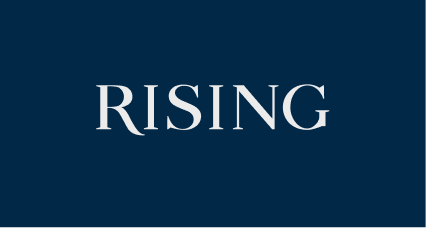
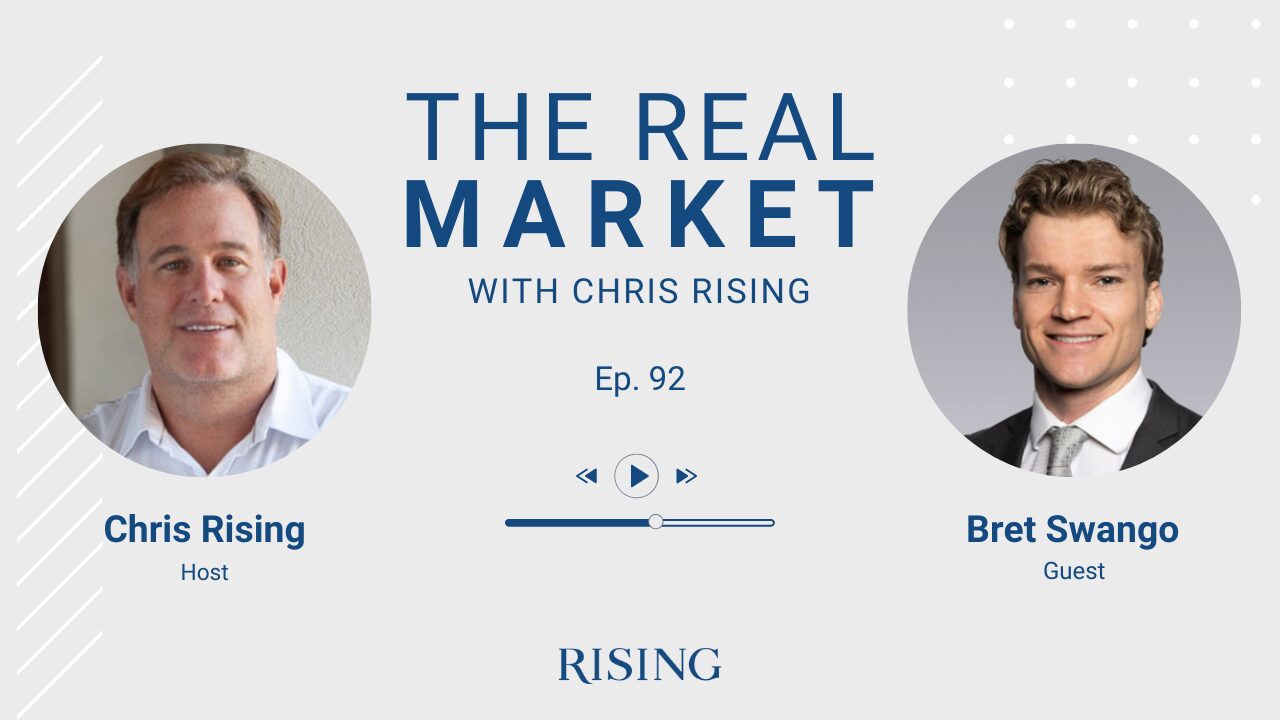
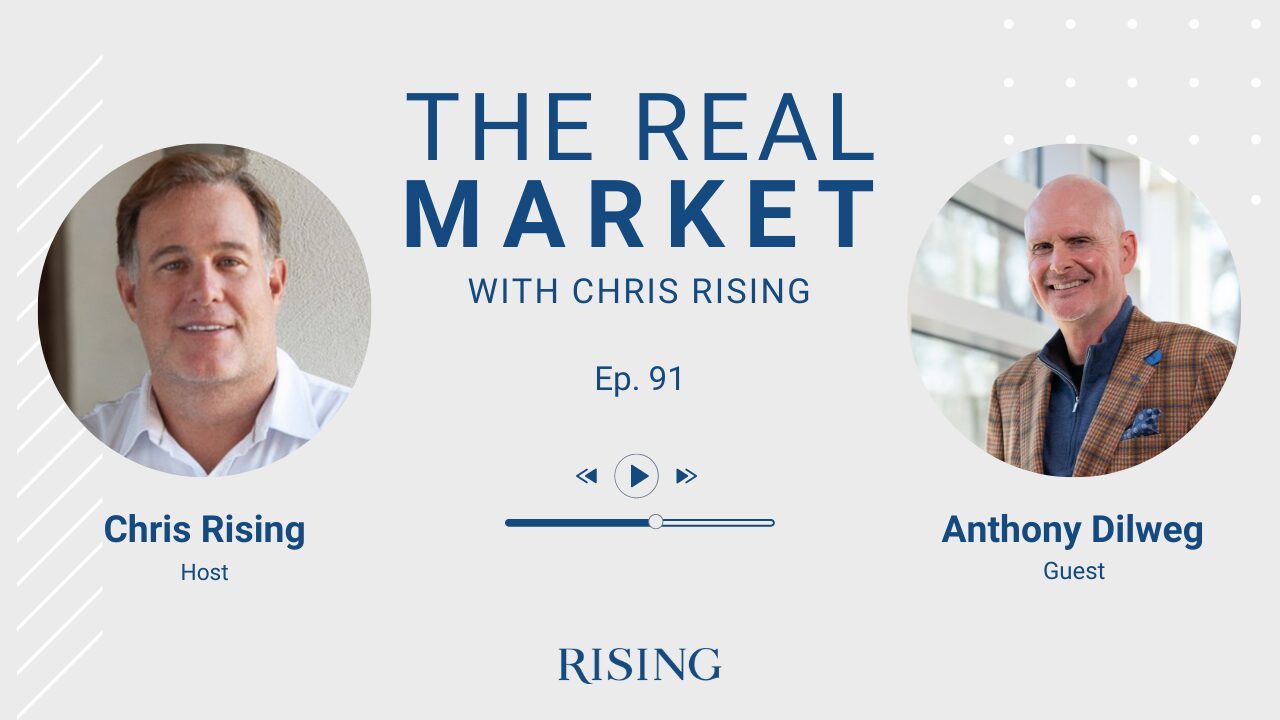
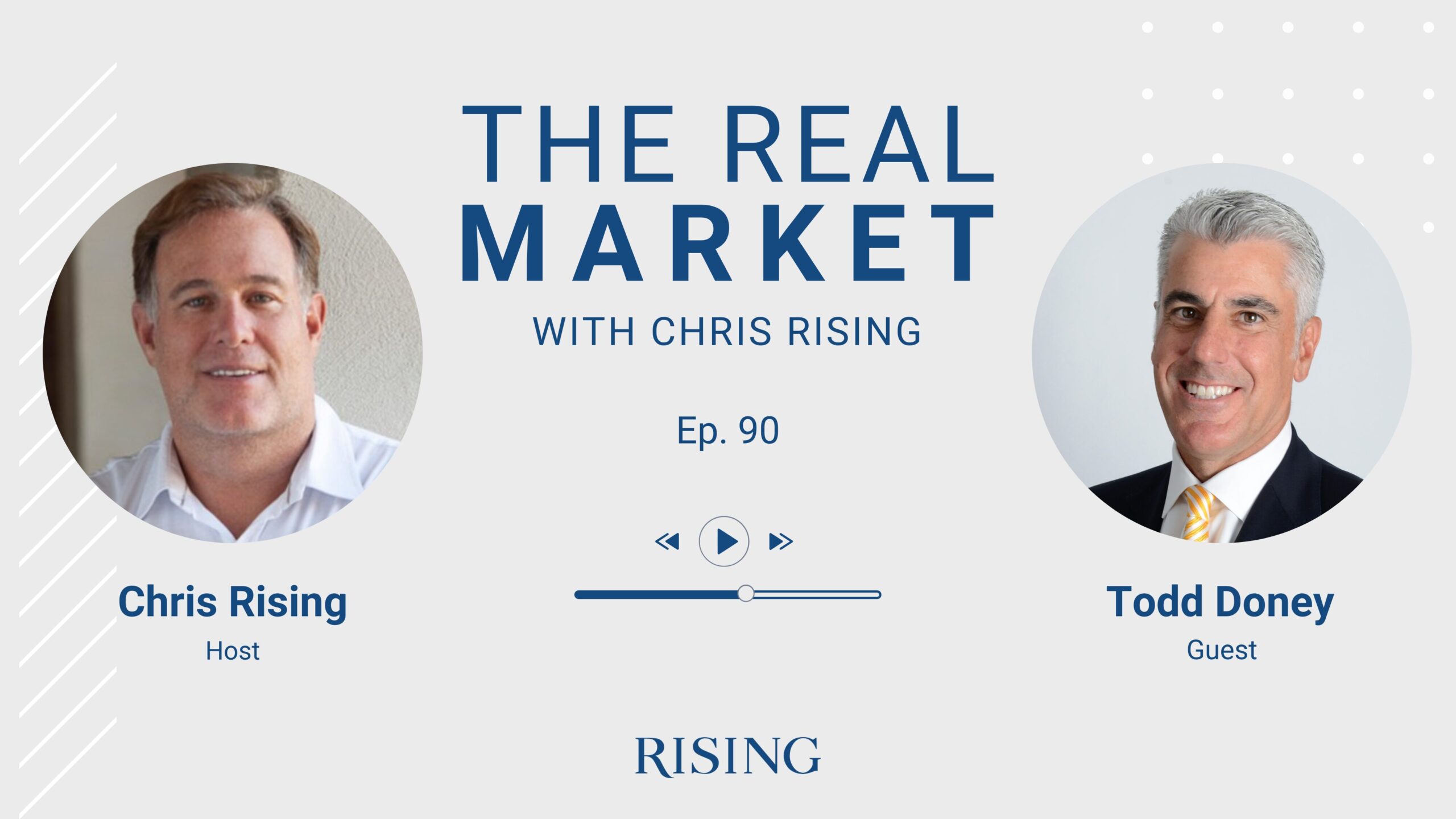
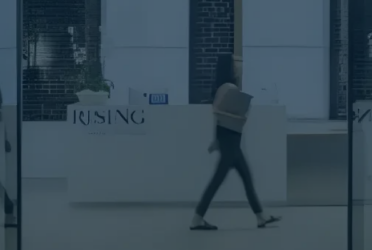
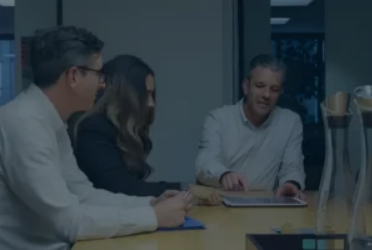
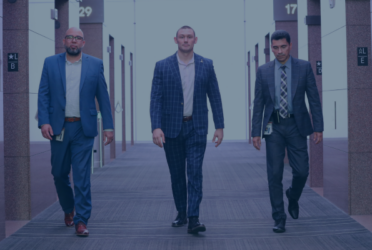
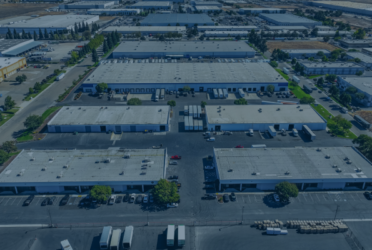
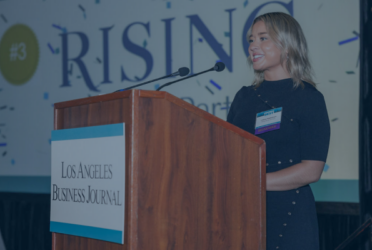
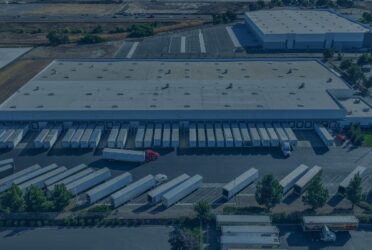
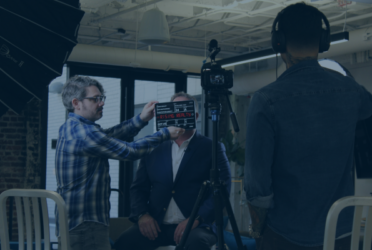
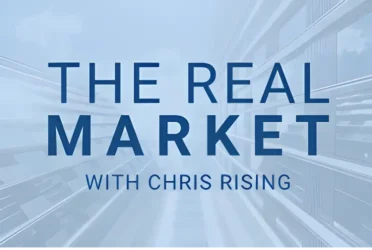 Podcast
Podcast